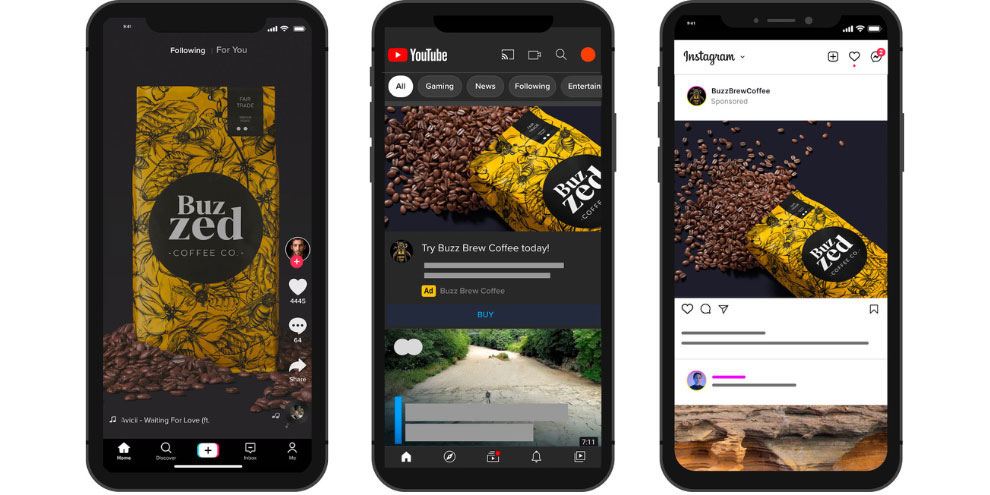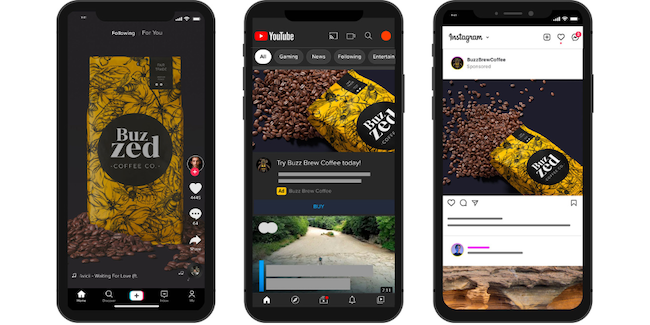The power of design and implicit associations
By Char-Lynn Griffiths, VP Design and Marketing, Talk Shoppe and Heather McKinney, Senior Research Director, Talk Shoppe.


It is an established fact that people don’t like ads. Or at least that’s what they’ll say when you ask them directly. Ninety-six percent of people in the U.S. say they don’t believe ads are truthful, according to Inc. Magazine. A recent SurveyMonkey study notes that 74% say they are tired of social media ads. According to a 2019 Kantar study, only 12% of connected consumers in the U.S. say they find advertising enjoyable. With such outward animosity towards advertising, how do you get consumers to express any positive opinions about ads? And while people may say they feel a certain way, how can you find out what they actually think? The Talk Shoppe team was tasked with this challenge by a client – a social platform and advertising publisher – who wanted to know whether ad placements across different media platforms could have a different impact on how people perceived the advertisement and brand. We knew that asking consumers directly wouldn’t work, so we conducted an experiment. The results were fascinating!
Hypothesis
Platform and advertising perceptions do not necessarily align. Consumers may have positive feelings towards a platform but this does not mean that they will have positive perceptions of the advertising placed on that platform. Platforms may elicit similar positive brand perceptions (i.e., they may be used, trusted or enjoyed to a similar degree) but the actual perceptions of advertising on those platforms can be significantly different. Most importantly, consumers may not even be conscious that they feel differently about the ads they see across platforms.
Challenges
We knew that separating ad and brand perception from platform perception would be challenging. First, people have a stronger attachment towards the platforms they use than they do towards the ads they see and this stronger attachment could color their reactions to any ad they saw on a platform. Second, people rarely, if ever, consciously place different ad experiences on a balance to compare-and-contrast them; they don't think, "Do I feel better about this brand/ad because I saw it on this website compared to this other website?" So, we knew that getting people to reflect on their ad experiences in a survey would be nearly impossible without leading them and biasing the research.
Another problem we had to overcome was preexisting brand perceptions. How can we separate the perceptions of the platform itself from the perceptions people may have of well-known brands and their advertising on the platforms we were testing?
Methodology
What if we could control for preexisting brand perceptions by creating a mock brand? We would then be able to place mock ads for this brand on different platforms and see how consumer perceptions changed based solely on the platform.
We decided to create a new coffee brand called "Buzzed" and place mock ads on realistic UIs of different platforms. To accurately measure sentiments, we ran a version of the implicit association test (IAT) with our mock ads.
An implicit association test is a research tool that was first developed at Harvard University that measures the strength of associations between concepts (e.g., identity groups, brands, types of advertising, etc.) and a set of evaluative attributes (e.g., good, bad, honest, trustworthy, etc.). Research participants are shown two different concepts side-by-side and are asked to select the one that best matches an evaluative attribute as fast as possible. By imposing a time constraint and encouraging speed, research participants are dissuaded from overthinking their response; they act on instinct and first impressions.
The ultimate “aha moment” of the IAT is this: it surfaces emotions and associations people may not even realize they have about the concepts being shown. Its power as a research tool is in measuring unconscious attitudes that people cannot articulate. This is how we get at what people actually think as opposed to what they say they think.
In our study1, we used the IAT to measure people’s associations of the mock "Buzzed" advertising on different platforms (the concepts) with ad perceptions (the evaluative criteria). We showed participants the mock advertising as it would appear in-situ on two different platforms, rotating between our client’s platform and competitive platforms. We put the mock advertising on the two platforms side-by-side on the survey screen, and in the center of the two images we flashed a series of one-word perceptions, one at a time (e.g., quality, trustworthy, risky, misleading, honest, happy, etc.). Once the word flashed on the screen, participants were asked to select the advertising that they most associated with that word as fast as possible.
Participants were only exposed to ads on platforms they reported visiting frequently earlier in the survey. We also asked about their attitudes toward the platforms to compare how their implicit ad opinions align with their stated perceptions of the platforms.
Results
Our hypothesis was proven true. When asked directly (before the IAT), consumers had similar perceptions of the platforms; but their associations with the advertising on each platform through the IAT revealed significantly different perceptions. Here is one example for illustrative purposes:
Platform trust perception asked prior to IAT
+3 percentage point gap between Brand A (our client) and the competitive average
Brand A (our client): 50% (n=1,946)
Competitive average: 47% (n=7,791)
Association with “trustworthy” in the IAT exercise
+16 percentage point gap between Brand A (our client) and the competitive average
Brand A (our client): 58% (n=1,946)
Competitive average: 42% (n=7,791)
Conclusion
These results allowed our client to make more confident claims to potential brand partners about the impact of the advertising on its platform. They were able to show that while consumers may have similar stated perceptions of advertising across platforms, their implicit and actual perceptions of the advertising differ significantly. Ultimately, they were able to prove that the advertising on their platform is more trustworthy, credible and enjoyable.
Key takeaways summary
Consumers are not necessarily conscious of how they really feel about specific ads; some of their feelings towards ads are hidden or implicit. Because consumers are not conscious of their real feelings towards ads, the range of ad perceptions across platforms are longer and more nuanced than they care to admit or even recognize.
Consumers’ hidden perceptions may not align with stated (or conscious) perceptions. Therefore, positive feelings towards a platform will not necessarily translate to positive perceptions of the advertising placed on that platform.
 www.letstalkshoppe.com
www.letstalkshoppe.com
hello@letstalkshoppe.com
949-339-1072

